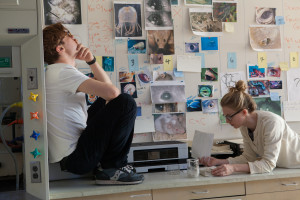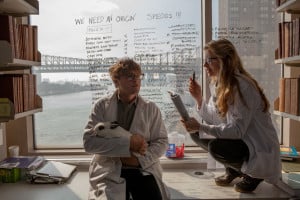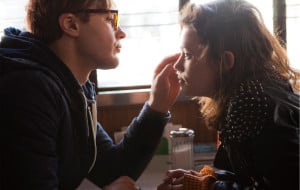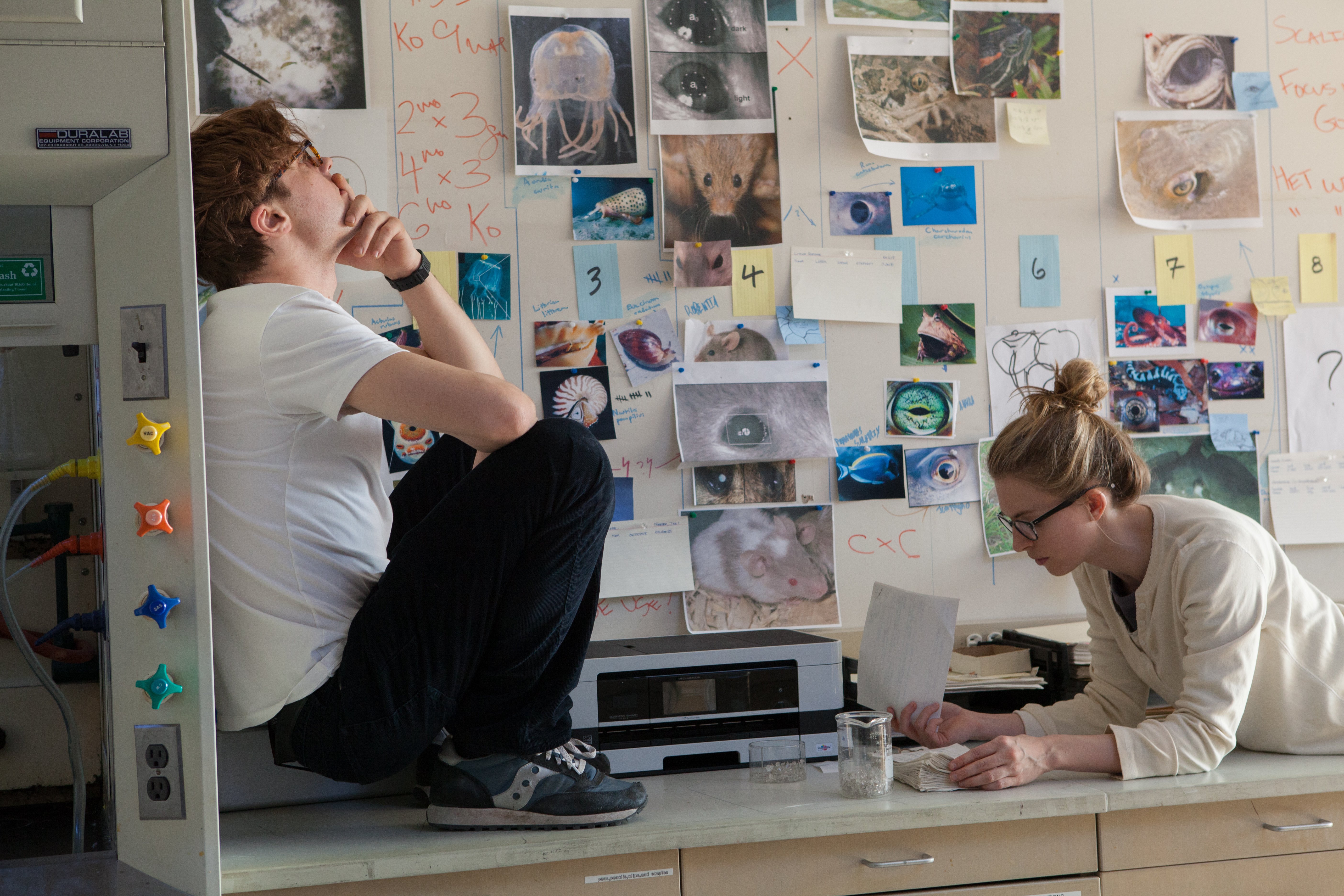
Writer-director Mike Cahill’s sophomore film, “I Origins,” opened on Friday and will continue to play in South Bay cinemas this week. The film centers around Ian (Michael Pitt) and Karen (Brit Marling), both of whom are biology Ph.D. students who study the evolution of the human eye. Ian sees the world in a very rational, scientific way, and the film explores how he opens himself up to and pushes up against spirituality. The film, which explores the debate between science and spirituality, and also very accurately depicts how scientists behave, won the Alfred P. Sloan award for outstanding depiction of science at the Sundance Film Festival. The Daily sat down with Cahill to discuss the science in the film, its characters and how Cahill approaches both writing and directing.
The Stanford Daily (TSD): I felt that the scientists in the movie really talked and acted like scientists and I’m wondering how you approached that.
Mike Cahill (MC): I really wanted to capture the authenticity of real-life scientists in the film. We were really fortunate to be invited by the scientists at Johns Hopkins into their laboratory. We also had scientists on set, like my brother Hugh. I would give them headphones and plant them right in front of the monitor to listen in on the dialogue. Even in mid-scene, they were helping to modify some dialogue as we needed. But getting that right and getting the science right was really important to me because you don’t see that very often on film. And scientists are the people who I admire most in the world.
TSD: It wasn’t just the specific scientific terminology, though, but also just the way they think. I really liked the word games that Karen and Ian play when labeling their specimens, like “P is for pneumonia.” So how did that come about?

MC: That’s the thing about brilliant actors, and these brilliant actors in particular. Like, I got to witness Michael Pitt watch scientists and really sort of take their mannerisms and make them his own, from the most mundane things of like pipetting saline solution in the laboratory to running gels to the way he danced. I mean, it was very transformative because Michael isn’t like that at all in real life.
TSD: So you had them follow around scientists before filming? Or, what was the preparation there?
MC: A lot of that they do on their own time, which is building the backstory of the character. Michael sent me some writing that he did about Ian’s life when he was younger, and his experiences with his family, all things that are before the first page of the script that are the history of his character – Brit does that as well. She really builds the character; who these people are before the story is something that great actors build. They create that history way more than the director will ever know, and that’s what makes their every micro-mannerism and choice so authentic. They become this person with history, so that whole process is owned and manifested by the actors.
TSD: As a writer-director are you always re-writing or is there a point at which you take off your writer’s hat and put on your director’s hat?
MC: I am constantly rewriting to everybody’s frustration, perhaps. Even the night before shooting, I can sometimes change a few things here and there, which is not really fair, but I do do that sometimes. Even in the editing, you rewrite a little bit as well. It’s never finished until it’s finished, and even then I still probably go back and tweak it a bit more. I think right now, as it is it’s done, and I’m very happy with it.

TSD: How did you go about developing the characters of Karen (Brit Marling) and Sofi (Astrid Bergès-Frisbey)? They’re very different women in Ian’s life.
MC: In a way, Karen and Sofi are two opposite sides of the same coin. One may present, like Sofi is the more spiritual one, but she actually has a great deal of wisdom. She may have uncovered her belief in the world through intuition, and yet she can even explain Ian’s work by analogy, like when she talks about the light sensors on the worms [that Karen and Ian are studying in the lab]. And Karen comes to a lot of her beliefs and understanding about the world via the scientific method: probing, asking questions, retesting and retesting. But she also has a great deal of spiritualism and is the one who is probably more open to the idea of a spirit or a soul than Ian even. So in a way, Karen and Sofi are the real soulmates in this movie.
TSD: Ian seems to have very different relationships with them, too. He seems to have more of a partnership with Karen than with Sofi.
MC: Right, he does, and I think those types of love, those shapes of love – many of us have experienced something like this in different partners or people we spend time with or are connected to. The movie doesn’t put a valuation that one is better than the other. It may perhaps suggest one can last longer or that one provides something that the other doesn’t. But it’s a celebration of different types of love and they’re both equally valid.
